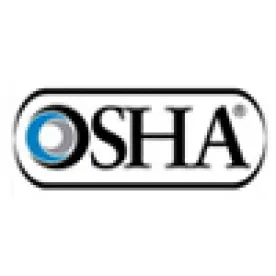On April 2, 2015, Thomas Galassi, Director of the Directorate of Enforcement for OSHA, sent a memorandum to all Regional Directors announcing that the agency’s National Emphasis Program on Nursing and Residential Care Facilities would be extended until replaced by updated guidance or removed by the agency. Mr. Galassi went on to state that, because the health care industry reports more work-related injuries and illnesses than any other general industry, the Agency will continue to use both enforcement and collaborative efforts to address hazards such as musculoskeletal disorders from lifting patients or residents, exposures to tuberculosis, bloodborne pathogens, workplace violence, and slips, trips and falls. We are advising you of the Agency’s intent to soon issue updated guidance that instructs OSHA offices to allocate enforcement and other resources to additional inpatient healthcare facilities, such as nursing homes and hospitals that have occupational illness and injury rates above the industry average.
Also on April 2, OSHA published its revised “Guidelines for Preventing Workplace Violence for Healthcare and Social Service Workers” (see related coverage). Soon thereafter, on May 14, 2015, OSHA and the National Institute for Occupational Safety and Health (“NIOSH”) released the Hospital Respiratory Protection Toolkit, providing detailed guidance for health care employers to use in an effort to protect employees from exposure to infectious diseases and other respiratory hazards.
Notably, both of those guidance documents include a preface reminding employers that the Occupational Safety and Health Act (“Act”) requires employers to comply with safety and health standards and regulations promulgated by OSHA and that, in addition, the Act’s General Duty Clause requires employers to provide their employees with a workplace free from recognized hazards likely to cause death or serious physical harm. Employers should not take these statements lightly.
There is no workplace violence prevention standard. Although there is a respiratory standard, the guidance contained in the Hospital Respiratory Protection Toolkit includes requirements that exceed existing OSHA standards. OSHA is sending a clear sign to health care employers that, if their workplace violence or respiratory protection programs are found wanting, the agency will issue citations under the General Duty Clause. In fact, in the Hospital Respiratory Protection Toolkit, OSHA went so far as to state that OSHA requires health care employers to evaluate the workplace and expects hospitals to develop respiratory protection policies based on guidance from the Centers for Disease Control and other public health guidance. Otherwise, “in the event of an OSHA compliance investigation, an employer’s failure to implement respirator use according to recognized and generally accepted good infection control practices and public health guidance could result in an OSHA citation.”
So what should health care employers be doing right now to prepare for OSHA’s intensely increased scrutiny?
- Carefully review Epstein Becker Green’s OSHA Inspection Checklist to ensure that you are thoroughly prepared for an inspection.
- Review the Healthcare Section of OSHA’s website, paying particular attention to theStandards/Enforcement tab, the new Guidelines for Preventing Workplace Violence for Healthcare and Social Service Workers, and the new Hospital Respiratory Protection Toolkit. If you are not already in compliance with the applicable standards and guidance, begin compliance efforts immediately.
- Work with counsel to conduct an internal compliance audit of your facilities, particularly if any facilities have a particularly high rate of work-related injuries and illnesses (be sure to work with outside counsel in conducting such audits so that the resulting audit reports are protected from disclosure by the attorney-client privilege, otherwise OSHA may be able to subpoena the audit reports and use them to identify potential health and safety issues in the workplace).
The bottom line is that OSHA is coming. Accordingly, employers in the health care industry should act now to ensure that their employees are working in the safest possible conditions and that, when OSHA appears at their door, they can demonstrate their commitment to employee health and safety.



 />i
/>i

